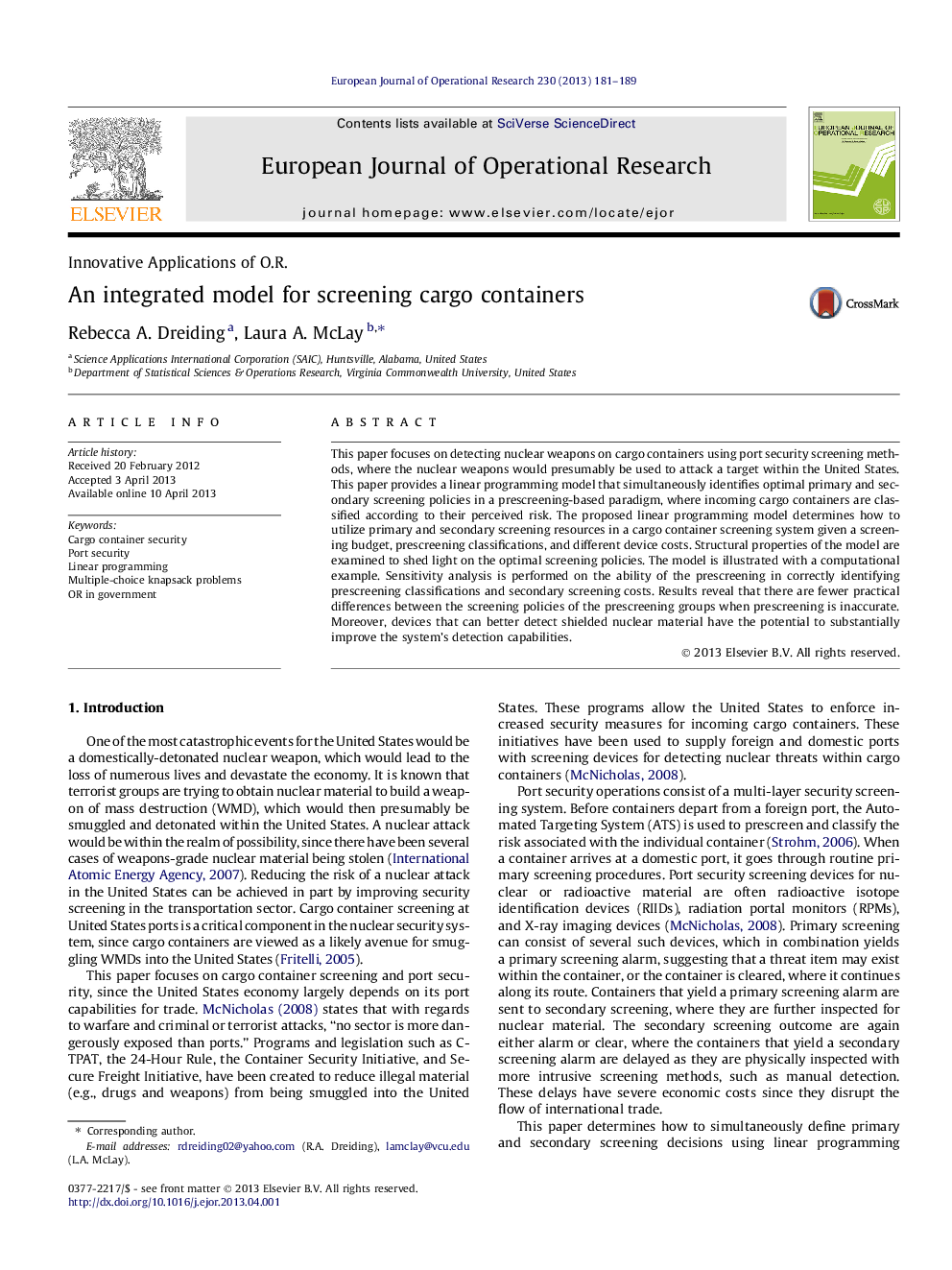| Article ID | Journal | Published Year | Pages | File Type |
|---|---|---|---|---|
| 479952 | European Journal of Operational Research | 2013 | 9 Pages |
•We apply knapsack analysis to the problem of screening for nuclear materials.•The analysis considers various levels of intelligence based “pre-screening”.•We illustrate the effectiveness of screening methods using speculative values.•The analysis models a range of threats when screening for nuclear material.
This paper focuses on detecting nuclear weapons on cargo containers using port security screening methods, where the nuclear weapons would presumably be used to attack a target within the United States. This paper provides a linear programming model that simultaneously identifies optimal primary and secondary screening policies in a prescreening-based paradigm, where incoming cargo containers are classified according to their perceived risk. The proposed linear programming model determines how to utilize primary and secondary screening resources in a cargo container screening system given a screening budget, prescreening classifications, and different device costs. Structural properties of the model are examined to shed light on the optimal screening policies. The model is illustrated with a computational example. Sensitivity analysis is performed on the ability of the prescreening in correctly identifying prescreening classifications and secondary screening costs. Results reveal that there are fewer practical differences between the screening policies of the prescreening groups when prescreening is inaccurate. Moreover, devices that can better detect shielded nuclear material have the potential to substantially improve the system’s detection capabilities.
